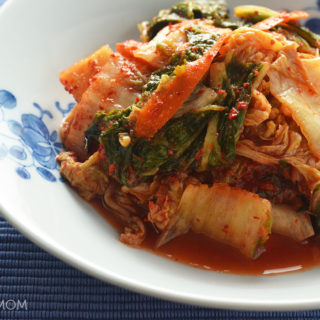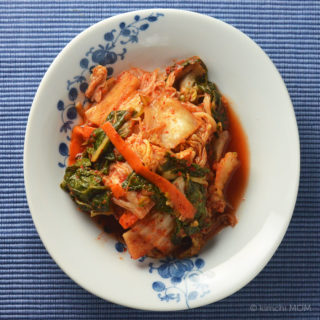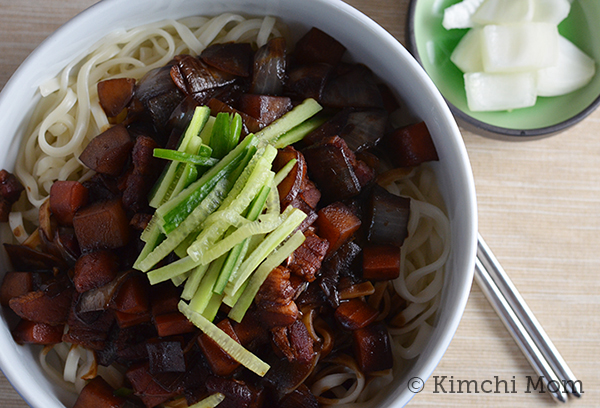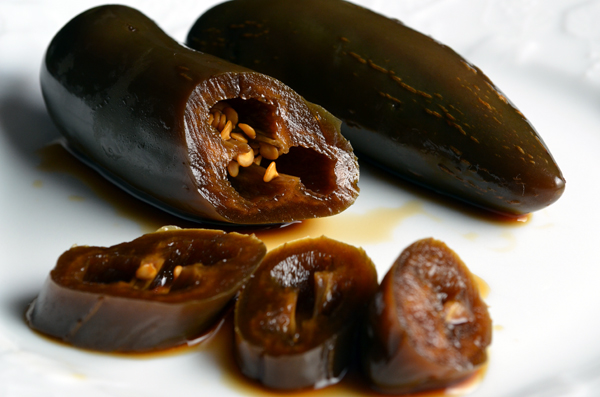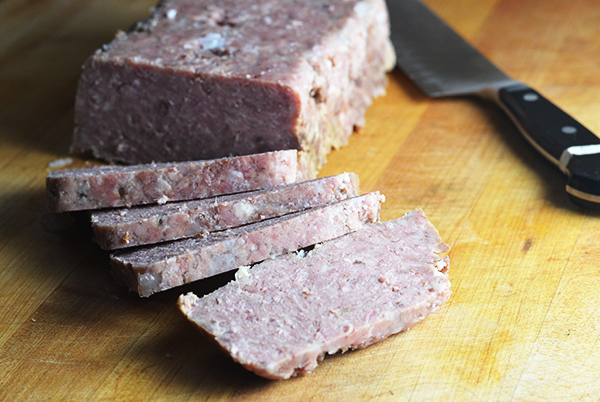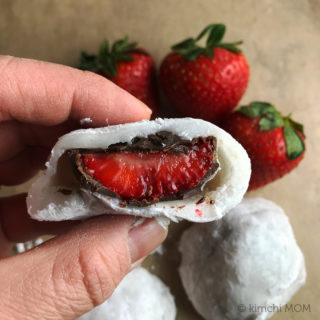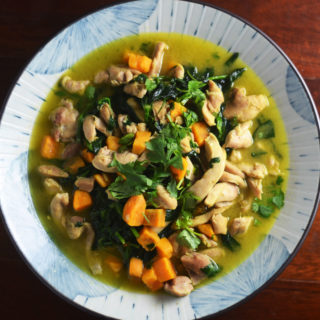Thank you to Sarah Bates of The Chef Next Door for hosting today’s Hot and Spicy #SundaySupper event!
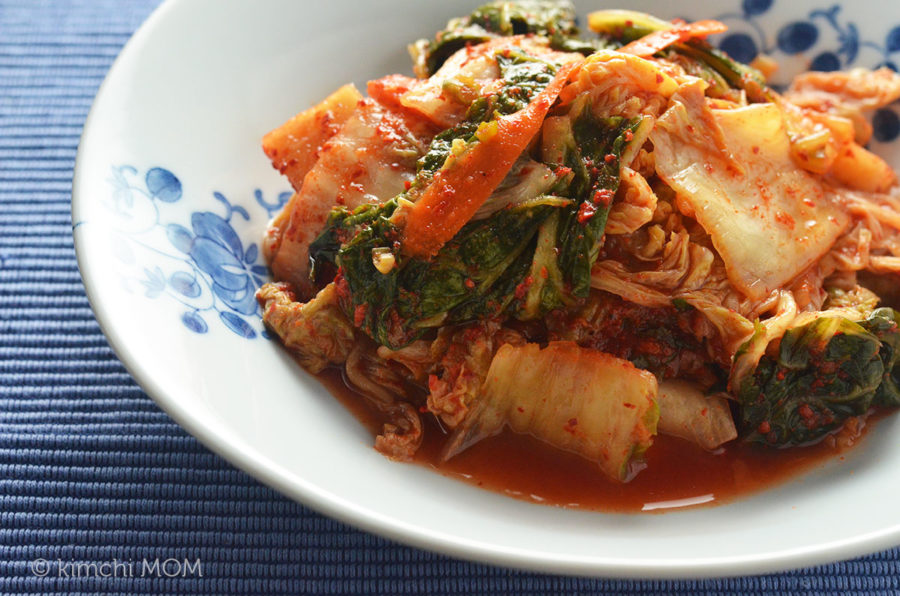
Have you heard of the 10,000-hour rule? Author Malcolm Gladwell theorizes that to truly master something, you will have had to log in at least 10,000 hours of practice. This theory was based on a study by Swedish psychologist Anders Ericsson. So what does this have to do with kimchi? Well, I feel like kimchi-making requires some level of practice to get to a point where it’s easy to make and, most importantly, it consistently tastes awesome. When I first posted a recipe for this same dish, I had only made it a few times and it turned out a decent kimchi…50 percent of the time. Now 5 years later, I’ve made this particular kimchi a little less than 100 times. And if we’re following the 10,000-hour rule, I’ve got about 9,900 hours become an expert kimchi maker. But I feel like after 5 years or about 100 hours, I’ve got this dish down. I’ve gotten rid of a couple of steps, streamlined some others, and just finally got it where I got the level of tang to where I love it. Also, when you’ve made a dish so many times, you always have to adjust and tweak every time you make it. And let me tell you, not all kimchis are alike. The store-bought kimchi tend to be sweeter and every family adds their own little flair to their kimchi.
What is kimchi? It is considered the national dish of Korea. Kimchi is lacto-fermented, the same process that is used to make sauerkraut and traditional dill pickles. There are literally hundreds of types of kimchi, but in general when you hear the word kimchi, it usually refers to cabbage kimchi or mak kimchi. Mak kimchi is when the cabbage has been cut into slices, generally 2-inches wide, before it is seasoned and fermented. There is another cabbage kimchi called poggi kimchi which differs in a few ways including presentation. It is fermented in whole sections of cabbage and only sliced to serve after it has been fermented.
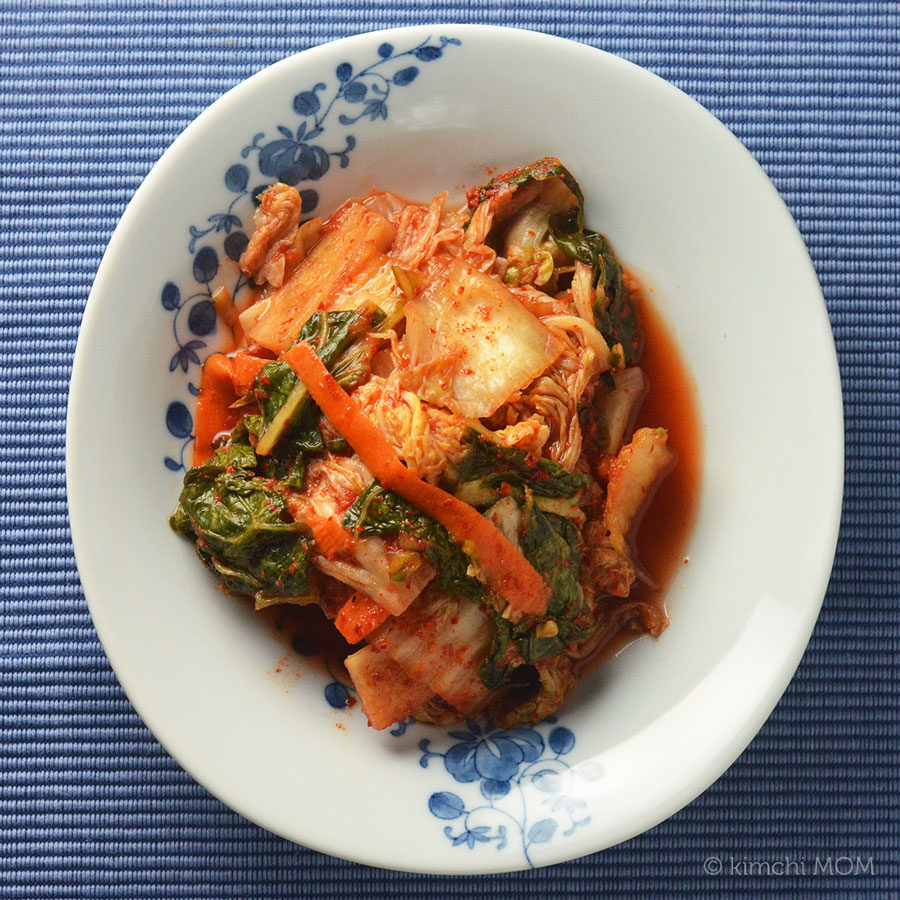
I tried to pare down the ingredient list so that you can find most of the ingredients at your local grocery store. But depending on where you live, a few of the ingredients may still be a challenge to find if you don’t have access to an Asian or Korean grocery store. The kochugaru or Korean red pepper flakes may be difficult to find in your regular grocery store, but even this ingredient can now be found at Whole Foods. It’s also available on amazon.com and this is my favorite brand. Please note that this is not the same as the crushed red pepper you find in the spice aisle of your grocery store. By the way, this is my favorite fish sauce!
Eat the kimchi as a side dish and definitely with rice. Here is a list of other dishes you can make with kimchi!
Easy to Make Cabbage Kimchi (Mak Kimchi) #SundaySupper
Ingredients
- 8 pounds Napa cabbage
- 3/4 cup coarse sea salt or Kosher salt
- 15-18 cloves of garlic roughly chopped
- 1 1/2 " knob of ginger peeled and roughly chopped
- 1 cup gochukaru Korean red pepper flakes
- 1/3 cup fish sauce
- 1/8-1/4 cup white granulated sugar
- 5-6 stalks of green onions thinly sliced
- 8 ounces daikon or Korean radish julienned
- 2-3 carrots julienned
Instructions
- Brining the cabbage: Discard any wilted or discolored leaves. Starting at the base of the stem, cut the cabbage about one-third of the way down. Then pull apart the cabbage halves to completely separate them. Do the same with the halved portions - cut and pull apart. Repeat for all the cabbage heads.
- Trim the core at the base at a diagonal. Cut the quarters into 2-inch wide pieces and place in an colander. Rinse and drain. Work in batches if necessary.
- Transfer a couple of handfuls of cabbage to an oversized bowl. If you don't have one of those giant bowls from HMart, use a couple of large bowls. Sprinkle generously with some salt. Alternate layers of cabbage and salt. Once the bowls are full, top with a sprinkle of salt. If using one big bowl, add about a 2 cups of water. Cover each mound of cabbage with a plate. One that is smaller that the mouth of the bowl so that the plate rests on the cabbage.
- Let the salted cabbage sit on the counter for 8-12 hours. Give it a toss every now and then.
- Preparing the sauce: While the cabbage is close to being ready, prepare the red pepper sauce. In a blender, add the garlic, ginger, and about 1/2 cup of water. Pulse until pureed.
- In a large bowl, mix kochukaru (red pepper flakes), the ginger/garlic paste, fish sauce, green onions, and sugar. The mixture should have the consistency of a thick batter. If it's a little thick add about a 1/2 cup of water, a 1/4 at a time. Taste. It should be balanced – not too salty, not too fishy, not to spicy and not too sweet. Adjust seasonings at this point.
- Slice the daikon in 2-inch sections as shown below. Cut the radish crosswise in 2-inch sections. Cut those sections in half and slice into 1/8" thick slices.
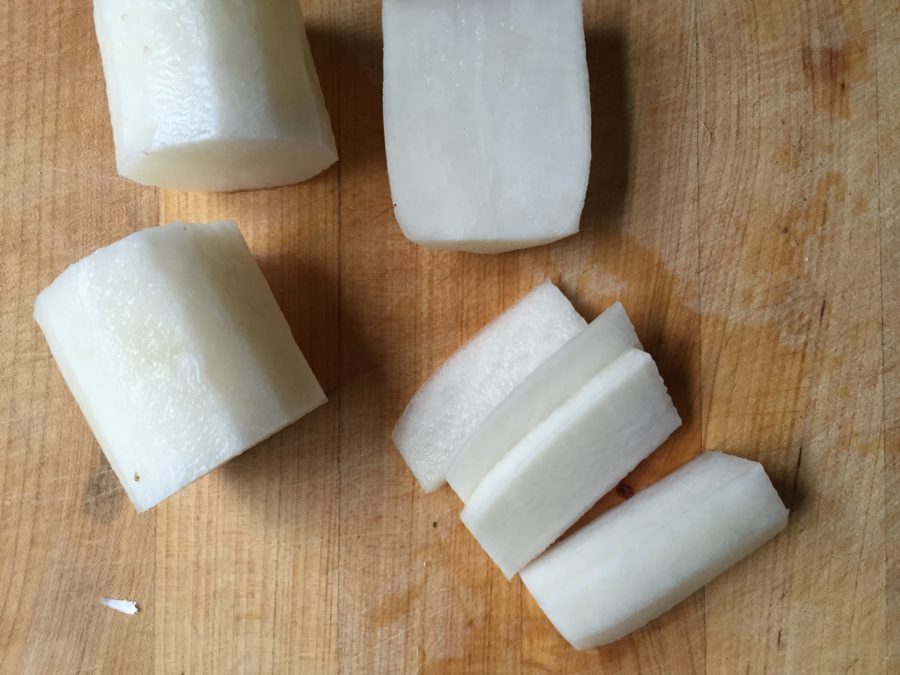
- Mix in carrots and radish into the red pepper mixture.
- Make the kimchi: Once the cabbage is ready (the volume of the cabbage should have decreased, and it should be a bit wilted), drain in a colander and give it a quick rinse.
- At this point you may want to wear clean food-safe plastic gloves especially if you have sensitive skin. Transfer the cabbage to the bowl with the sauce. Mix after adding a few handfuls. Thoroughly mix the sauce and cabbage and make sure every piece of cabbage is coated with the red pepper sauce. Taste. Always taste.
- Transfer the cabbage mixture into a large glass jar. Press down on the cabbage as you are filling the jar. Leave about 1-inch of space from the top.
- Don’t throw the empty bowl in the sink just yet. Pour enough water (about 1/2 cup) into the bowl to get all the pepper sauce. Carefully pour into the jar. Close the lid, but not too tightly. You want some air to escape as the kimchi ferments.
- Leave the jar at room temperature** for about a day on the counter away from direct sunlight. I leave mine out for about 24-30 hours. This is when the magic happens. You may want to place the jar in a shallow bowl or plate in case there is overflow of kimchi juice.
- After those 24 or so excruciating hours, sample the kimchi. There should be a slight tang. At this point it is ready to be refrigerated. A good indicator is if you start to see bubbles at the surface. You can eat the kimchi right away or if you're like me, I like to wait a week or so. The kimchi will continue to ferment at a much slower pace in the refrigerator and will keep for about 4 weeks. At about the 3-4 week mark the kimchi will turn really sour at this point and if you have any left in the jar, it will be perfect for jigae, fried rice, ramen or jun.
Notes
Here is a video to help you visually and is to be used with the recipe above.
Turn up the heat with these other spicy hot recipes by the #SundaySupper Tastemakers!
Aromatic Appetizers
- Buffalo Chicken Spring Rolls by Cupcakes & Kale Chips
- Cajun Shrimp Dip byCooking with Carlee
- Harissa Lamb Meatballs with Herbed Yogurt Dipping Sauce by The Hungry Goddess
- Jalapeno Cheddar Roasted Chickpeas by A Kitchen Hoor’s Adventures
- Smoky Jalapeno Pineapple Salsa by Dash of Evans
- Spicy Apricot Chicken Meatballs by My Life Cookbook
- Spicy Jalapeno Chickpeas by Helpful Homemade
- Spicy Peach Chicken Wings by Eat, Drink and be Tracy
- Spicy Sugared Cashews by That Skinny Chick Can Bake
Distinctive Drinks
- Cilantro Jalapeno Mojito by Manu’s Menu
- Shoo Fly Punch with a Kick by Our Good Life
Daring Desserts
- Chipotle Peanut Butter Cookies by Renee’s Kitchen Adventures
- Cinnamon Rolls by The Freshman Cook
- Mexican Chocolate Pudding by Pies and Plots
- Peppercorn Shortbread by The Finer Cookie
- Spicy Fudge Brownies by The Chef Next Door
- Spicy Mexican Hot Chocolate Fudge by Hezzi-D’s Books and Cooks
Masterful Mains
- Buffalo Chicken & Lentil Stuffed Peppers by Momma’s Meals
- Chicken Karahi (Pakistani Chicken Curry) by Curious Cuisiniere
- Chicken Stuffed Poblano Peppers by Feeding Big and more
- Chickpea, lentil and spinach curry by Caroline’s Cooking
- Devil’s Chicken by Monica’s Table
- East Indian Chard and Lentils by Wholistic Woman
- Fried Chicken with a Kick by A Day in the Life on the Farm
- Grilled Chipotle Pork Chops by Cooking Chat
- Hella-peno Burger by Fantastical Sharing of Recipes
- Jalapeno Popper Pizza by Hardly A Goddess
- Kung Pao Chicken by Palatable Pastime
- Lomo Saltado by Tramplingrose
- Spicy black bean burgers by Simple and Savory
- Spicy Penne all’arrabbiata by She Loves Biscotti
- Sweet & Spicy Pulled Pork Tacos by Grumpy’s Honeybunch
- Sweet Chili Pork by Cookin’ Mimi
- Tunisian Garlic Chickpea Soup by What Smells So Good?
Seasoned Sides
- Baked Sriracha Sweet Potato Fries by Magnolia Days
- Easy to Make Cabbage Kimchi (Mak Kimchi) by kimchi MOM
- Green Mango Sambal by Food Lust People Love
- Grilled Potato Salad with Spicy Picada Sauce by Culinary Adventures with Camilla
Plus Homemade Ginger Ale and Spice is Nice Recipes from Sunday Supper Movement
 Join the #SundaySupper conversation on twitter on Sunday! We tweet throughout the day and share recipes from all over the world. Our weekly chat starts at 7:00 pm ET. Follow the #SundaySupper hashtag and remember to include it in your tweets to join in the chat. To get more great Sunday Supper Recipes, visit our website or check out our Pinterest board.
Join the #SundaySupper conversation on twitter on Sunday! We tweet throughout the day and share recipes from all over the world. Our weekly chat starts at 7:00 pm ET. Follow the #SundaySupper hashtag and remember to include it in your tweets to join in the chat. To get more great Sunday Supper Recipes, visit our website or check out our Pinterest board.
